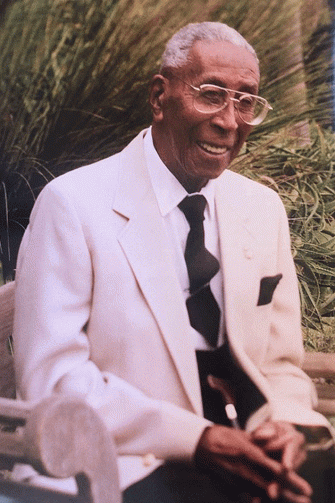
by Karen Telleen-Lawton, Noozhawk Columnist, Read the original column at Noozhawk.com
Sorting through my published clips file, I came across a Santa Barbara Seasons article on Grover Barnes from 15 years ago. Barnes, then celebrating his 100th birthday, had previously been named Santa Barbara’s Local Hero of 2001 for his active citizenship and exceptional service at the Miramar Hotel from the 1940s to 1980s.
He was also an amateur historian and photographer, prolific writer of letters to newspaper editors and local officials, and money-raiser for local Black students.
Barnes trained in education in his native Texas, but school districts often paid him in vouchers, which were typically redeemable at only a quarter of their value.

Moving to California to start over, Barnes chose hospitality. On his first day of work at the Miramar, one employee quit rather than work with a Black man. What did society miss when he was shut out of his chosen profession?
White Californians tend to think the American South was the perpetrator and perpetuator of racism. Rather, we were in the thick of malfeasance. Beginning in the 1930s, most major cities in California were affected by redlining, the official practice by federal agencies and banks restricting home loans in certain areas primarily to white Americans.
Redlining was a major source of segregation, disinvestment, and inequity of opportunity for homeownership and wealth accumulation. Recent research by the National Institutes of Health is examining associations between historical redlining and subsequent environmental determinants of health and health-related outcomes.
While official redlining is long gone, its effects linger in large and small ways.
Last July, Los Angeles County deeded Bruce’s Beach to the descendants of an African-American couple from whom it was taken without just compensation in the 1930s. In Palm Springs, hundreds of Black and Mexican families recently filed a claim against the city to mitigate the harm from their forcible evictions in the 1950s and 1960s.
The racism of today is more insidious, sometimes hidden in complex formulas of databases. For example, unhoused residents in L.A. have been surveyed since 2016 to rank their needs and allot housing.
An analysis of the survey showed persistent disparity along racial lines, with white people more often considered “high acuity” and thus more needful of housing. The L.A. Housing Authority plans to stop using the tool, but does not yet have an alternative.
Persistent racism threatens our environment and our democracy. UCSB political scientist Christopher Parker questions whether the United States can claim to be the oldest democracy given “slavery and Jim Crow rule for a third of the population.”
“‘American democracy’ is this idea that people like me — Black folks — weren’t initially included in, and institutions weren’t set up for us to be either,” writes Parker. “Yet we were made to bear the burden of sustaining it, even fighting for it during war.”
Ben Jealous, new executive director of the Sierra Club, would likely agree.
“Racism has always been the wedge that kings and oligarchs have used to weaken people’s ability to assert their claims to justice,” he said. “It’s an artifact of an old colonial divide-and-conquer strategy.
“It’s an obstacle to us saving the planet. Racism helps to ensure poverty, which keeps people desperate in making bad decisions about the future of the planet.”
Some executives have tried to improve the diversity, inclusiveness, and belonging of their organizations by taking advantage of diversity training programs. One of their goals is to encourage participants to question their internal dialogues in a healthy way.
Here are a couple that are free to the public:
https://implicit.harvard.edu/implicit/takeatest.html
https://www.microsoft.com/en-us/inclusion-journey/learn
Internal bias tests can be eye-opening. However, they have not been shown to change biases by themselves. The training can even backfire, by sending the message that biases are beyond our control.
Effective training requires more than an increased awareness of bias and its impact. It helps significantly to be presented information that contradicts stereotypes. Most important is to connect with people whose experiences are different from ours. We all can learn to manage our biases and change our behavior.
One of Grover Barnes’ memories involved traveling home to Santa Barbara on his motorcycle. His bike broke down in Ventura, but repair shops had closed for the day. He could find no hotel that would rent him a room, so he arranged to spend the night in jail rather than sleep on the street.
What people of color gain when racism is eradicated is an equal opportunity to act freely to strive for their potential. What the dominant culture gains is a richer life for everyone and the societal benefits of many more people with the opportunity to be their best selves.

Karen Telleen-Lawton, Noozhawk Columnist
Karen Telleen-Lawton is an eco-writer, sharing information and insights about economics and ecology, finances and the environment. Having recently retired from financial planning and advising, she spends more time exploring the outdoors — and reading and writing about it. The opinions expressed are her own.

